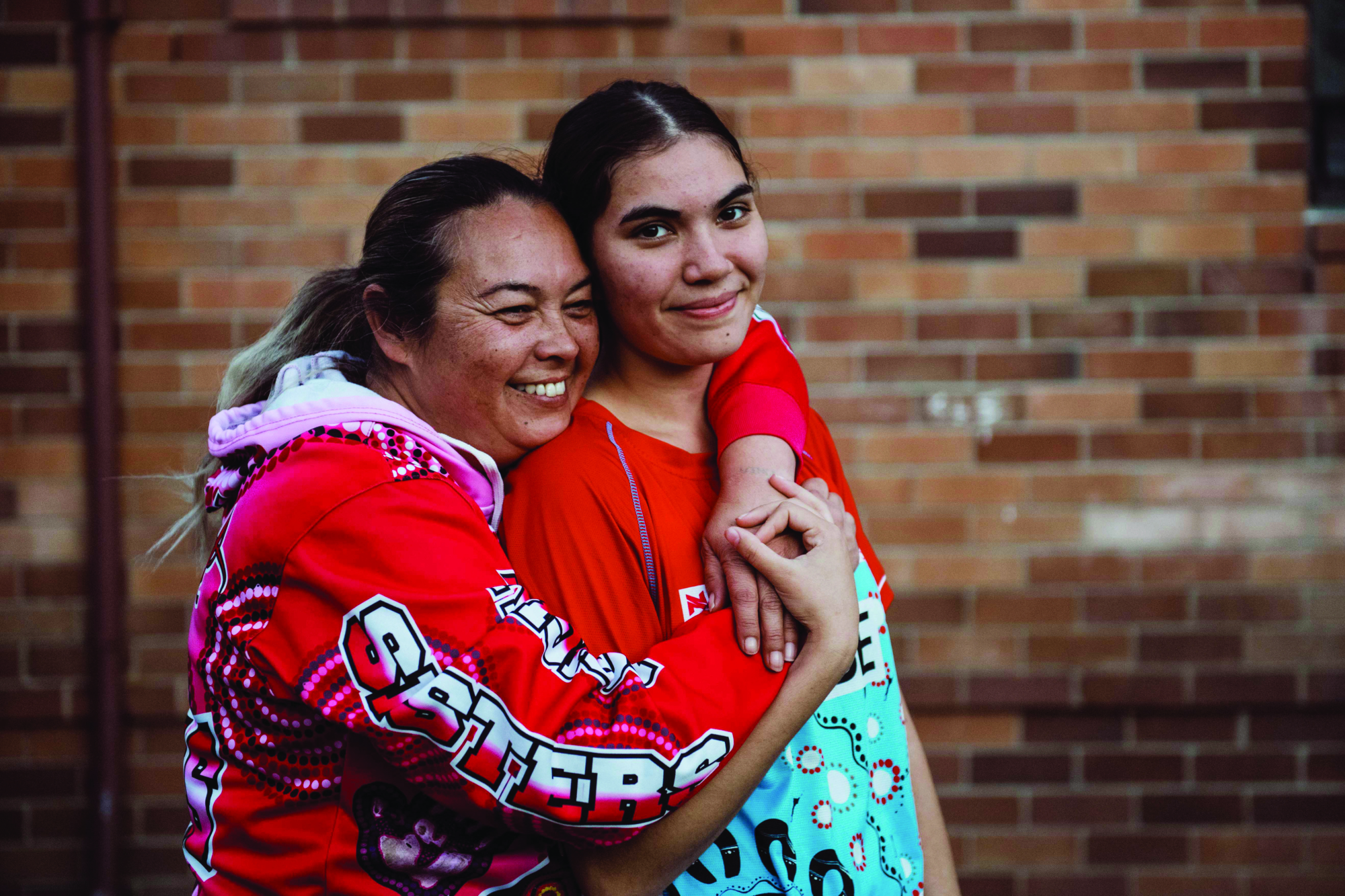It’s an idyllic scene that plays out much like a million others do in parks across Australia on a sunny day, as Leanne watches her son and another adult, Reza, goof off in the playground. ‘Ah, the Superman landing!’ Reza exclaims as the young boy jumps off some play equipment, and promptly imitates him. ‘Spiderman – get it right, Rez,’ Leanne corrects Reza, and gives her boy a cuddle.
An onlooker might be forgiven for assuming the trio is just like any other family on a weekend outing, but, in reality, things are a lot more complicated than that. ‘The independent legal representative, which is the child’s lawyer, is not happy with the current plan,’ Reza says in an aside to the camera. ‘It’s sad knowing that they’ve got five hours and then they’re going to be separated.’
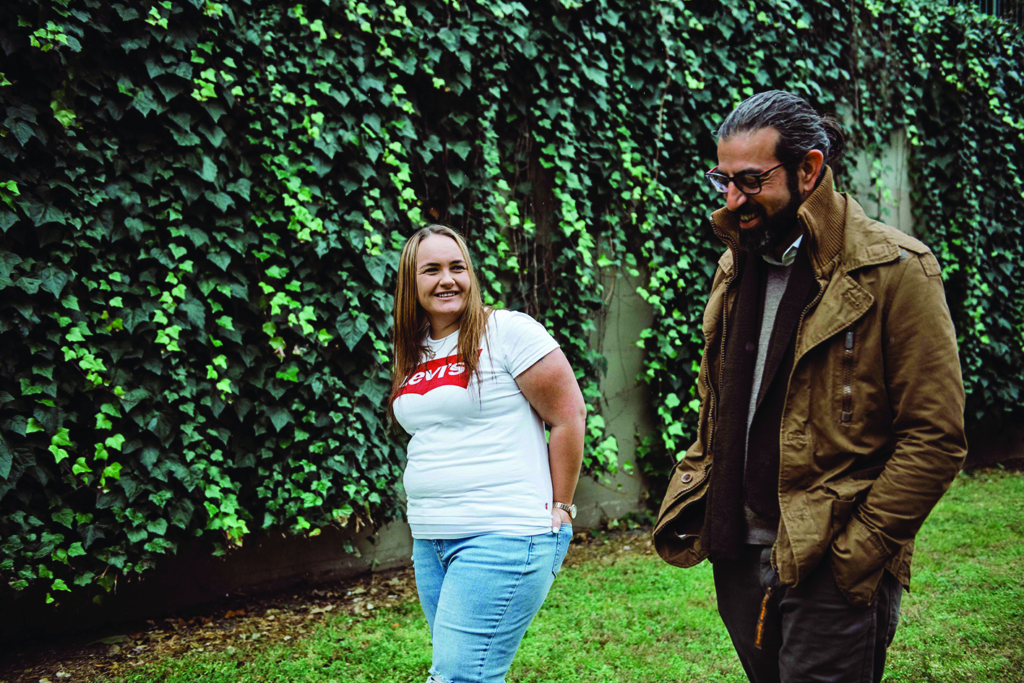
Reza is a child-protection caseworker with the New South Wales Department of Communities and Justice (DCJ) who was assigned to work with Leanne and her family after her son was reported as being at risk of serious harm. He met Leanne at a low point: after building a life many aspire to – including her own home, a career and two boys enrolled in private school – domestic violence led her to follow her partner into drug use and her life to spiral out of control.[1]See Shark Island Productions, The Department press kit, p. 15. With her older son having opted to live with family members, it was the younger child who was raising Reza’s alarm bells when they first met, showing signs of medical neglect and speech delay alongside his absence at school.
In The Department (Sascha Ettinger-Epstein, 2021), a Shark Island Productions documentary on the inner workings of the DCJ and the families it supports, we meet Reza and Leanne a year into their complex relationship – though Leanne still vividly recalls the trauma of Reza’s arrival in her life:
I had him taken. There is nothing more painful – and the shame that I have, and the guilt that I have to live with […] I allowed you guys to come in and say that I wasn’t fit to parent my son. I had to sign paperwork over and pack his bags up, and send him on his way to my parents’ house.
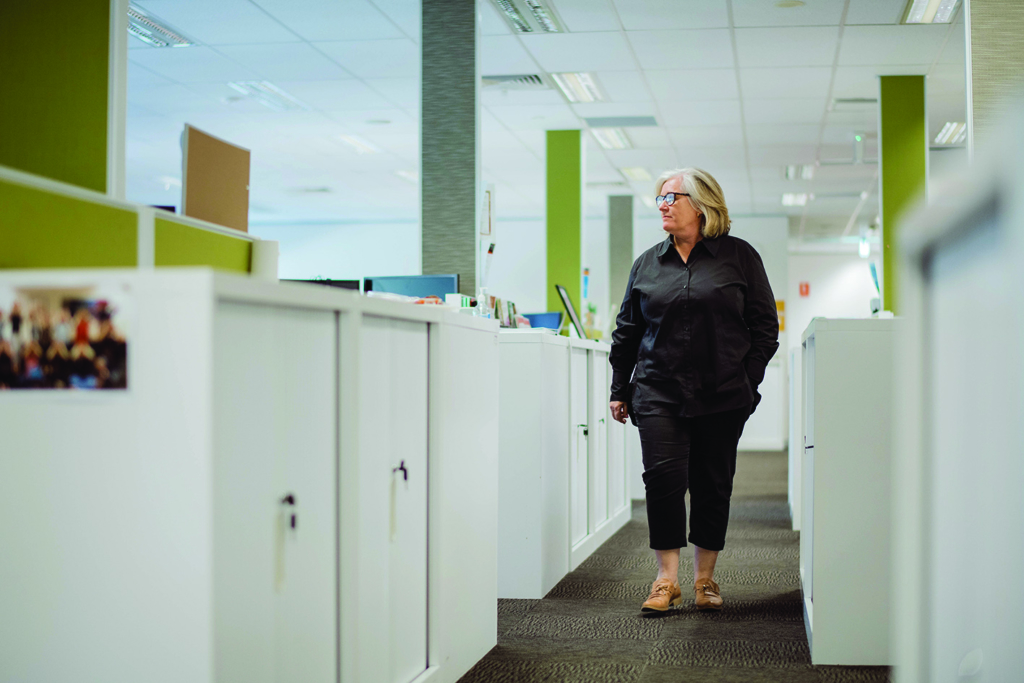
This first conversation we witness between Reza and Leanne, as he visits her halfway through her rehab program, encapsulates the complexity of their relationship, and shows the incredibly difficult work both caseworker and client must tackle in order for it to be effective.
For the caseworker, overcoming the ever-present power imbalance and almost inevitably traumatic beginning to the relationship so as to build enough trust and mutual respect to help parents navigate incredibly challenging and personally exposing circumstances is just the first hurdle. The ongoing relationship with their clients, which can span years, asks them to walk a tightrope between trust and scrutiny, support and oversight – and a wrong decision may have life-altering, even fatal, consequences.
For the client, trusting and working with a system that has control over the future of their children is no less of a big ask. And if they do engage with the department, the hurdles they must overcome if they hope to regain custody of their children are often monumental – overcoming addiction, trauma, violence, poverty and mental health challenges, and rebuilding a life free from potentially harmful communities, family members or behavioural patterns they may have once relied on. In many cases, this trauma has played out over generations – and in the case of many Indigenous families affected by the Stolen Generations, it’s a trauma that was at least partially inflicted in the first place by the predecessors of the very institution they are now asked to work with.[2]See Bianca Nogrady, ‘Trauma of Australia’s Indigenous “Stolen Generations” Is Still Affecting Children Today’, Nature, 25 June 2019, <https://www.nature.com/articles/d41586-019-01948-3>, accessed 9 November 2021.
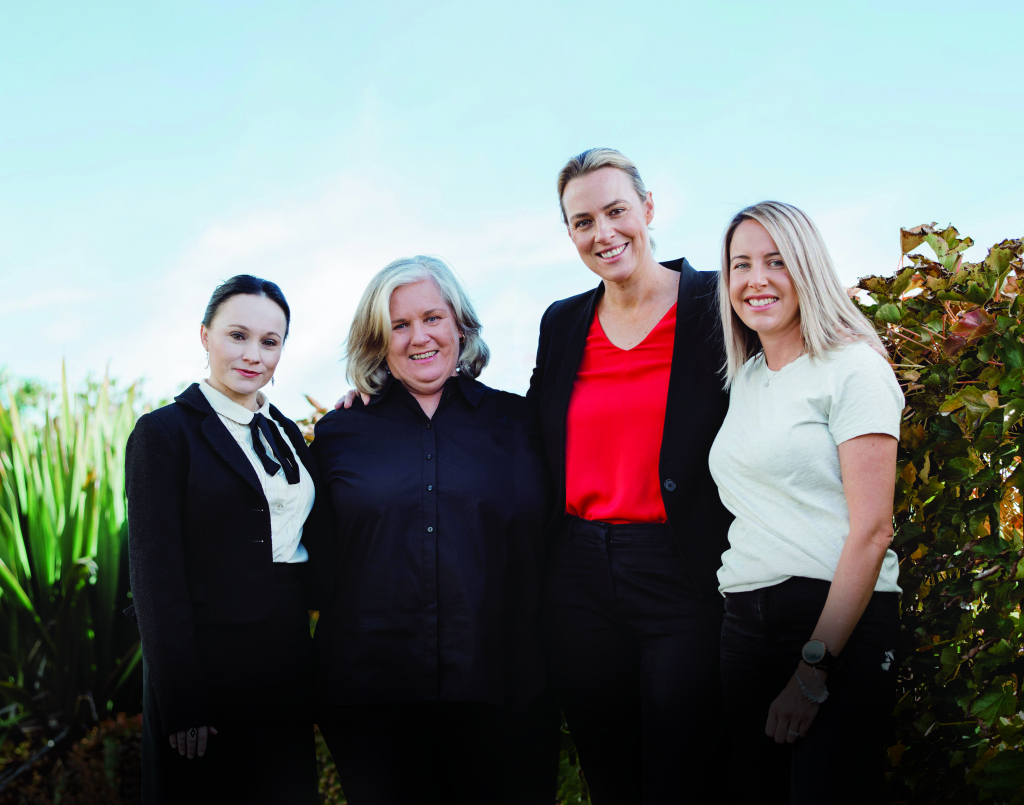
According to a report by the Australian Institute of Health and Welfare, in 2019/20, 58,567 children in New South Wales received some form of child-protection service, and 23,256 of them were on care and protection orders, meaning the DCJ took on partial or full responsibility for the child’s welfare.[3]Australian Institute of Health and Wellness, ‘Child Protection Australia 2019–20’, 2021, p. 10, available at <https://www.aihw.gov.au/getmedia/c3b0e267-bd63-4b91-9ea6-9fa4d14c688c/aihw-cws-78.pdf.aspx>, accessed 9 November 2021. Yet before watching The Department, most people would have little insight into the inner workings of child protection; as the film’s production notes point out, ‘The only time the public hears about the system that protects our most vulnerable children is when something goes terribly wrong.’[4]Shark Island Productions, op. cit., p. 4.
In many ways, The Department is a natural continuation of the themes of previous Shark Island films. Following the lives of charity workers and young residents at the titular inner-Sydney youth refuge, The Oasis (Ettinger-Epstein & Ian Darling, 2008) showed in visceral detail what can happen when children fall through the cracks of the system, and its release and related impact campaign prompted then–prime minister Kevin Rudd to pledge to halve homelessness by 2020 – a goal that the country has fallen well short of.[5]See Fiona Hall, Life After the Oasis, study guide, ATOM, 2019, p. 2. With homelessness and inequality worse than ever before and rising in 2018, Ettinger-Epstein revisited many of the documentary’s original participants, now in their thirties, in Life After the Oasis (2019), showing the long-term impact of trauma and its potential to span generations.[6]See Hanna Schenkel, ‘Loved Back to Life: Hope, Community and Policy Failures in Life After the Oasis’, Metro, no. 204, 2020, pp. 40–3.
‘Parents don’t wake up in the morning wanting to neglect or harm their children. In fact, the vast majority have strong desires to give their offspring a better upbringing than they had.’
– Sascha Ettinger-Epstein
Despite her wealth of experience working with young people and families touched by the child-protection system, Ettinger-Epstein tells me that, prior to filming The Department, she only had a simplistic understanding of it – ‘that it often failed and children could die or were left to fend for themselves, or that children were “ripped” from parents who loved them without any opportunity or support for the parents’. She hopes the documentary will help evoke some compassion for families and caseworkers alike, and destigmatise the sector:
As many caseworkers explain, parents don’t wake up in the morning wanting to neglect or harm their children. In fact, the vast majority have strong desires to give their offspring a better upbringing than they had […] Similarly, many caseworkers don’t publicly admit working for the department as they are so reviled in society.
With an unobtrusive observational style, the film shows the many emotional and structural challenges families and caseworkers battle against. Along with Leanne and Reza’s story, it tags along for parts of the journeys of several families and caseworkers at key moments in their lives: prenatal specialist caseworker Eva and her Shellharbour colleagues help their client Katie through pregnancy and eventual family placement of her infant daughter; Indigenous mother of eight Stacey works with two different DCJ branches to have five of her children restored into her care; as she ages out of the care system, eighteen-year-old Tyrah accesses her records to finally understand what happened when she was eleven, when several police officers entered her home while she was in the shower and took her and her sister to live with their aunty; and the experience of carers is shown through the story of Keiron and Russell, who fully embraced the unexpected family they gained when they accepted care of their friend’s three children.
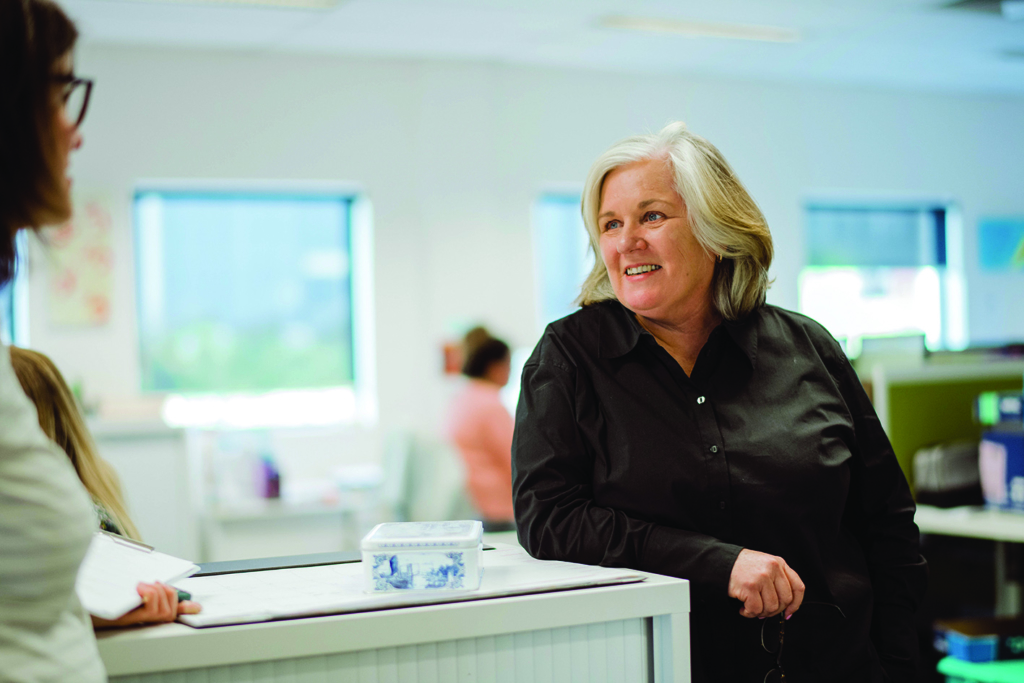
Representing the executive level of the DCJ is Kate Alexander, the organisation’s senior practitioner who travels across the state to inspire, influence and review best practice across the department. Through her, we hear some of the heartbreaking stories that come about when the system fails: a three-month-old baby with a skull fracture and twenty broken ribs; a young boy who apparently suicides after his continual cries for help go unrecognised by a system not set up well enough to help him. Alexander and her colleagues examine the reasons for these failures in group-supervision and executive-review meetings in the hope they will not be repeated. Ever present in Alexander’s work is the inescapable shadow that the legacy of the Stolen Generations casts on trust and effective cooperation between Indigenous families and the DCJ.
According to the 1997 Bringing Them Home report by the National Inquiry into the Separation of Aboriginal and Torres Strait Islander Children from Their Families, between one in three and one in ten Aboriginal children across Australia were forcibly removed from their families from around 1910 to 1970.[7]Australian Human Rights Commission, Bringing Them Home, April 1997, p. 31, available at <https://humanrights.gov.au/sites/default/files/content/pdf/social_justice/bringing_them_home_report.pdf>, accessed 9 November 2021. The scars left by this aggressive, paternalistic approach to child welfare and forced assimilation are still raw, and echoes of it pop up again and again in the words and recollections of families and caseworkers alike. Aboriginal caseworkers and consultants like Aunty Pam, who is working with Keiron and Russell to keep their wards’ cultural connections strong, now attempt to bridge this divide and build culturally sensitive praxis. Ongoing connection to older siblings and extended family, as well as their language and totems, is a top priority – as Aunty Pam reminds Keiron and Russell, ‘We don’t have a family tree; we have a family forest.’
The Department’s fly-on-the-wall approach makes for intimate viewing, and it is easy to relate to and empathise with every participant, all of whom are clearly trying to do the best they can with the resources available to them. Footage of Alexander’s talks and meetings across the state and sequences filmed at the Child Protection Helpline offer further glimpses into a wealth of stories and experiences, as well as lending a sense of scale to the film and the department’s work. While unerring in its compassionate approach and emphasis on the humanity and care evident within the system, The Department does not shy away from showing its weaknesses either: mistakes of the past and current failings that lead to horrific outcomes, as well as the inevitable inefficiencies and contradictions of any large-scale bureaucracy. Why does Stacey have to work with two separate branches of the department to fight for her children, for example? And why, when one branch closes its supervision of her toddler’s care entirely, and the Children’s Court restores custody of her fourteen-year-old daughter to her, is there still a question mark over whether her other three children can come home? How can families avoid being passed along between several caseworkers, or referred to services that can’t help them?
The Department’s fly-on-the-wall approach makes for intimate viewing, and it is easy to relate to and empathise with every participant, all of whom are clearly trying to do the best they can with the resources available to them.
The Department doesn’t provide answers for these questions, perhaps because easy answers don’t exist. It also does not provide closure for most of the families it follows – by the end of the film, Stacey, Katie and Leanne are all still fighting for their children, with a resolution seemingly still far off. This makes for a somewhat less satisfying viewing experience than Ettinger-Epstein’s previous work, as it makes the film feel both unresolved and less impactful as a tool for potential social change – as more of a slice-of-life experience, it leaves us with little sense of momentum or direction for where to go next.
In part, this is a reflection of the reality of the child-protection system – the majority of care and protection orders across Australia remain in place for more than twelve months, with 18 per cent lasting more than eight years, and there are many unavoidable delays involved in court proceedings.[8]Australian Institute of Health and Wellness, op. cit., p. 41. But, given the production was filmed between 2019 and 2021, the COVID-19 pandemic and related lockdowns’ impacts were also significant, and account for many of the film’s shortcomings.

‘COVID has been quite a limiting factor for us in making the film and realising its full potential,’ Ettinger-Epstein confirms, with lockdowns affecting everything from the capacity to build trust and rapport with potential participants, to the logistics of filming amid lockdowns and changing ways of working, to technological impediments in post-production. For participants, court proceedings were delayed and already sluggish processes often took even longer, which obviously affected storylines and the potential to reach definitive resolutions within the filming window. Renewed lockdowns in Sydney meant that post-production occurred in a vacuum, with editing, music and sound mixing taking place without the benefit of feedback screenings (other than those held to show all featured participants their scenes). ‘[The pandemic] has made the film a lot more difficult to make, and also took away the communal aspects of screening it to people and all being able to be together to acknowledge the achievement of completion,’ Ettinger-Epstein says.
Despite these issues, The Department’s never-before-seen insight into the child-protection system in New South Wales makes it an important cultural text, and the film more than meets Ettinger-Epstein’s primary goal of ‘[evoking] some compassion and understanding for both the struggle of the caseworkers and the families/parents/children in the system’. In fact, it is the huge amount of compassion and care evident within the system that shines through most strongly amid all the highs and lows of the film, and it’s the love and commitment shown by caseworkers and families alike that stays with you long after. As Reza says to Leanne in another of their meetings, ‘I’ve been in your little boy’s life for a year now, so I’m super invested.’ ‘Yeah,’ Leanne responds. ‘I’m more invested. He’s my child.’
https://thedepartmentfilm.com.au
Endnotes
| 1 | See Shark Island Productions, The Department press kit, p. 15. |
|---|---|
| 2 | See Bianca Nogrady, ‘Trauma of Australia’s Indigenous “Stolen Generations” Is Still Affecting Children Today’, Nature, 25 June 2019, <https://www.nature.com/articles/d41586-019-01948-3>, accessed 9 November 2021. |
| 3 | Australian Institute of Health and Wellness, ‘Child Protection Australia 2019–20’, 2021, p. 10, available at <https://www.aihw.gov.au/getmedia/c3b0e267-bd63-4b91-9ea6-9fa4d14c688c/aihw-cws-78.pdf.aspx>, accessed 9 November 2021. |
| 4 | Shark Island Productions, op. cit., p. 4. |
| 5 | See Fiona Hall, Life After the Oasis, study guide, ATOM, 2019, p. 2. |
| 6 | See Hanna Schenkel, ‘Loved Back to Life: Hope, Community and Policy Failures in Life After the Oasis’, Metro, no. 204, 2020, pp. 40–3. |
| 7 | Australian Human Rights Commission, Bringing Them Home, April 1997, p. 31, available at <https://humanrights.gov.au/sites/default/files/content/pdf/social_justice/bringing_them_home_report.pdf>, accessed 9 November 2021. |
| 8 | Australian Institute of Health and Wellness, op. cit., p. 41. |
